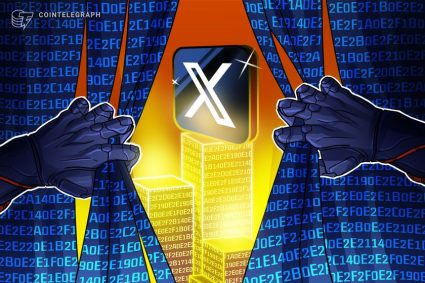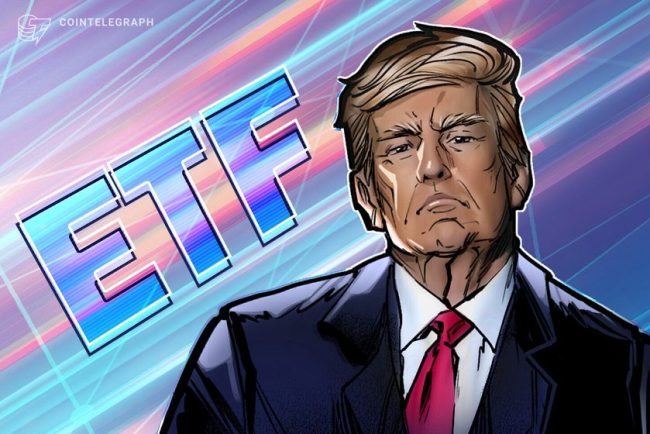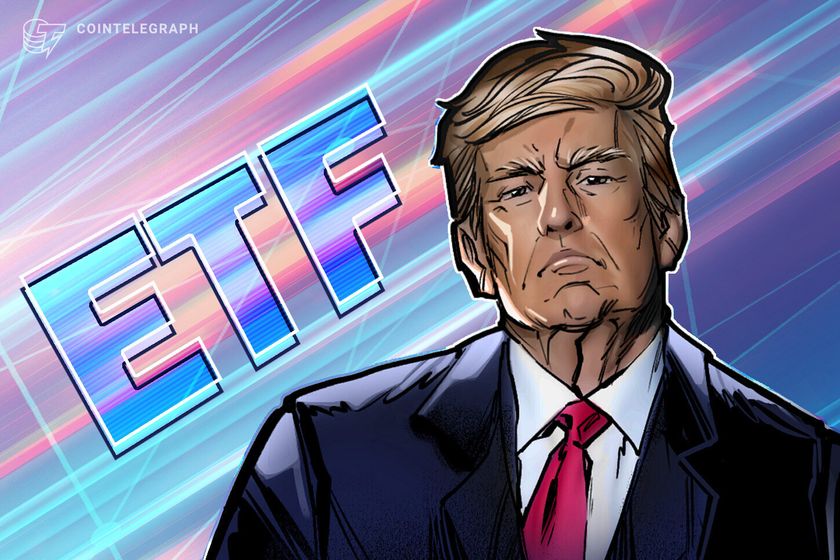
How to read a stablecoin attestation report and why it matters
Key takeaways Stablecoin attestation reports provide third-party verification that each token is backed by real-world assets like cash and US Treasurys. Attestation ≠ audit: Attestations are point-in-time checks, not deep financial audits, so users should still perform broader due diligence. Not all tokens are redeemable. […]
Analysis
How to build an AI crypto trading bot with custom GPTs
AI is transforming how people interact with financial markets, and cryptocurrency trading is no exception. With tools like OpenAI’s Custom GPTs, it is now possible for beginners and enthusiasts to create intelligent trading bots capable of analyzing data, generating signals and even executing trades. This […]
AnalysisCan Strategy Survive a Bitcoin Crash? The Company’s Risky Capital Model Under Scrutiny
The post Can Strategy Survive a Bitcoin Crash? The Company’s Risky Capital Model Under Scrutiny appeared first on Coinpedia Fintech News MicroStrategy Incorporated, recently renamed as Strategy, is the largest publicly traded corporate owner of Bitcoin, with 528,185 BTC purchased at an average price of […]
Research report


Litecoin X account briefly hacked to promote a fake token
Litecoin’s (LTC) X social media account was briefly hacked on Jan. 11 by a scammer promoting a fraudulent Litecoin token on the Solana network. “LTC is now in Solana,” the hacker wrote in a now-deleted and grammatically incorrect post, which featured a contract address and […]
Litecoin

Litecoin’s (LTC) X social media account was briefly hacked on Jan. 11 by a scammer promoting a fraudulent Litecoin token on the Solana network.
“LTC is now in Solana,” the hacker wrote in a now-deleted and grammatically incorrect post, which featured a contract address and a Pump.fun link to the scam token.
In an update, the Litecoin team announced that it regained control of the account and said the hack was due to a compromised delegated account that has since been removed.
There has been a string of account hacks on X in recent months, resulting in the promotion of fake tokens or phishing links designed to steal funds and sensitive data.
Source: Litecoin
Related: Hacker breaches 15 X accounts, nets $500K boosting bogus memecoins: ZachXBT
X account hacks on the rise
Restaking protocol EigenLayer’s X account was hacked on Oct. 18 to promote a fake airdrop campaign.
The hacker posted several malicious links from the account promoting the “Season 2 Stakedrop” — which the scammer claimed was sourced from reallocated EIGEN tokens — before the EigenLayer team regained control of the account.
On Nov. 3, rapper Wiz Khalifa’s account was compromised. The hacker used the account to advertise a fake celebrity memecoin called WIZ, claiming that the memecoin was associated with the musical artist.
The Cardano Foundation’s X account suffered a similar breach on Dec. 8, when a hacker took control of the social media page to promote a fake token called “ADAsol.”
During the incident, the threat actor falsely claimed that the Cardano Foundation would cease supporting its native asset, ADA (ADA), due to a lawsuit from the United States Securities and Exchange Commission (SEC).
The fake token generated approximately $500,000 in trading volume before the scam was exposed and the price of “ADAsol” plummeted by over 99%.
Yat Siu, co-founder of Web3 company Animoca Brands, was the victim of an X account hack on Dec. 26.
Like the other cases, the scammer used the account to advertise a fraudulent token — a fake memecoin on the Solana network called “Animoca Brands” that has no connection to the well-known Web3 company.
Magazine: Influencers shilling memecoin scams face severe legal consequences

Trump-linked Strive files for ‘Bitcoin Bond’ ETF
Strive, an asset manager founded by Vivek Ramaswamy, asked United States regulators for permission to list an exchange-traded fund (ETF) investing in convertible bonds issued by MicroStrategy and other corporate Bitcoin buyers, according to a Dec. 26 filing. The ETF seeks to offer exposure to […]
Litecoin

Strive, an asset manager founded by Vivek Ramaswamy, asked United States regulators for permission to list an exchange-traded fund (ETF) investing in convertible bonds issued by MicroStrategy and other corporate Bitcoin buyers, according to a Dec. 26 filing.
The ETF seeks to offer exposure to “Bitcoin Bonds,” described as “convertible securities issued by MicroStrategy” or by other companies that plan to “invest all or a significant portion of the proceeds to purchase Bitcoin,” according to the filing.
The Strive Bitcoin Bond ETF will be actively managed and will gain exposure to Bitcoin bonds either directly or through financial derivatives such as swaps and options, Strive said.
Strive has not yet specified the management fees investors will be charged, but actively managed funds typically charge more than passive index funds.
Entities holding Bitcoin in their treasuries. Source: BitcoinTreasuries.NET
Bitcoin bonds
Beginning in 2020, MicroStrategy has spent about $27 billion buying Bitcoin (BTC) as part of a corporate treasury strategy spearheaded by co-founder Michael Saylor.
Its stock, MSTR, has since gained more than 2,200%, outperforming practically every sizeable public company except Nvidia.
MicroStrategy has financed its buys by issuing a mixture of new stock and convertible bonds. Its bonds pay low or no interest but may convert to MSTR shares under certain conditions.
Other companies have followed suit. Corporate treasuries now hold about $56 billion worth of BTC, according to BitcoinTreasuries.NET.NET.
Related: These crypto ETFs are ‘call options’ on the US elections
Source: Nate Geraci
Trump connection
Ramaswamy, an outspoken ally of President-elect Donald Trump, founded Strive in 2022. The asset manager aims to help investors “harness the power of capitalism,” according to Strive’s website.
In 2023, Ramaswamy — who earned most of his $1 billion net worth from founding biotechnology startup Roivant Sciences — campaigned against Trump in the Republican presidential primary.
He later endorsed the president-elect. In November, Ramaswamy joined Tesla founder Elon Musk as a leader of the Department of Government Efficiency (DOGE), a private initiative intended to cut wasteful government spending.
Industry analysts see Trump’s presidential win as a green light for more than half a dozen proposed crypto ETFs waiting on regulatory approval to list in the US.
In 2024, asset managers submitted a flurry of regulatory filings to list ETFs holding altcoins, including Solana (SOL), XRP (XRP) and Litecoin (LTC), among others.
Since winning the US presidential election on Nov. 5, Trump has proposed appointing pro-crypto industry leadership for key regulatory agencies.
In December, the President-elect announced former PayPal chief operating officer David Sacks as his “AI and crypto czar,” and former SEC commissioner Paul Atkins as his pick for Securities and Exchange Commission chair.
Magazine: Bitcoin’s $100K push wakes taxman, Vitalik visits real Moo Deng: Asia Express

Betting markets predict bullish 2025 for crypto
Bettors are wagering that 2025 will be a banner year for cryptocurrency markets, according to a Cointelegraph review of data from two popular prediction markets. Traders on Polymarket and Kalshi expect Bitcoin (BTC) and Ether (ETH) to hit record highs in 2025. They also anticipate […]
Litecoin

Bettors are wagering that 2025 will be a banner year for cryptocurrency markets, according to a Cointelegraph review of data from two popular prediction markets.
Traders on Polymarket and Kalshi expect Bitcoin (BTC) and Ether (ETH) to hit record highs in 2025. They also anticipate the United States greenlighting several new types of crypto exchange-traded funds (ETFs) and establishing a strategic Bitcoin reserve.
As of Dec. 26, Kalshi prices more than 60% odds of BTC and ETH reaching at least $125,000 and $5,000 in 2025, respectively. Polymarket sets 50% odds of BTC touching $120,000 before the end of March.
To date, Bitcoin’s record high is around $108,300, and Ether’s is around $4,720.
Bitcoin price targets. Source: Kalshi
Related: Kalshi gives Paul Atkins 93% odds to be Trump’s SEC chair pick despite mixed reports
Meanwhile, Polymarket bettors expect US regulators to greenlight XRP (XRP), Solana (SOL) and Litecoin (LTC) ETFs by July 31, with probabilities of around 75%, 69% and 51%, respectively. They set the odds of a Dogecoin (DOGE) ETF approval by then at around 22%.
Additionally, Kalshi users see a 59% chance US President-elect Donald Trump will create a national strategic Bitcoin reserve during his presidency. Polymarket assigns only 29% odds of Trump doing so in his first 100 days in office.
Polymarket and Kalshi rose to prominence in the runup to the US elections in November, with upward of $4 billion in trading volume tied to the US presidential race alone.
Prediction markets work by letting users trade contracts tied to specific events, with prices fluctuating dynamically based on expected outcomes. They proved to be more accurate than traditional polling, forecasting not only Trump’s win but also his party’s sweep of the US House and Senate.
Source: Polymarket
Conflicting signals
Compared to betting platforms, conventional futures markets anticipate more modest gains for cryptocurrencies in the first quarter of 2025.
Traders on the Chicago Mercantile Exchange (CME), one of the US’ largest futures exchanges, are pricing in March spot prices of roughly $98,000 for BTC and $3,500 for ETH.
That’s still up meaningfully from BTC’s and ETH’s Dec. 26 spot prices of around $96,000 and $3,350, respectively. Both cryptocurrencies dropped around 4% as of late morning Eastern Time on Dec. 26.
Futures contracts are standardized agreements to buy or sell an underlying asset at a future date. They play a critical role in hedging strategies and are also popular for speculation.
Related: Why tech giants like Amazon may hesitate to adopt Bitcoin

Bitcoin, Ethereum combo fund to lead ‘wave’ of crypto ETFs in 2025: Analysts
An exchange-traded fund (ETF) tracking both Bitcoin and Ether is expected to be the first in a “wave” of new United States crypto funds in 2025, senior Bloomberg ETF analyst Eric Balchunas said. “We expect a wave of cryptocurrency ETFs next year, albeit not all […]
Litecoin

An exchange-traded fund (ETF) tracking both Bitcoin and Ether is expected to be the first in a “wave” of new United States crypto funds in 2025, senior Bloomberg ETF analyst Eric Balchunas said.
“We expect a wave of cryptocurrency ETFs next year, albeit not all at once,” Balchunas posted to X on Dec. 17, sharing an analysis from fellow ETF analyst James Seyffart.
The duo anticipates the first new Bitcoin (BTC) and Ether (ETH) combo fund to be followed by ETFs tracking Litecoin (LTC) or Hedera (HBAR).
Seyffart noted that the Securities and Exchange Commission rejected multiple Solana (SOL) ETFs on Dec. 7, adding that SOL and XRP (XRP) ETFs would have to wait until President-elect Donald Trump’s SEC chair pick takes control before they will be “seriously considered.”
Source: Eric Balchunas
Balchunas highlighted that regulators view Litecoin and Hedera more favorably, which is the reason the two analysts say they may get ETFs before larger market-cap assets like XRP and Solana.
Litecoin is more likely to be green-lighted because it is a fork of Bitcoin and may be viewed as a “commodity,” he said.
Hedera has not been labeled as a security by the SEC, which makes it easier for an exchange-traded product to receive approval.
Related: Bitcoin ETFs flip gold funds in AUM: K33 Research
XRP and SOL have been labeled as securities by the SEC, with Ripple having been engaged in a years-long legal battle with the agency over the legal status of XRP.
While the analysts see HABR and LTC as having higher odds of approval, they said it’s still unclear whether the funds will see much investor demand.
Many crypto pundits expect the SEC under Trump’s administration to be more receptive to crypto assets.
Trump recently said he intended to nominate pro-crypto businessman and former SEC commissioner Paul Atkins as the next SEC chair, which legal experts say may bring de-regulation amid a more pro-crypto policy.
Current SEC Chair Gary Gensler announced that he would resign from the agency on the day of Trump’s inauguration on Jan. 20, while fellow Democratic commissioner Jamie Lizarrage said he would be stepping down days before that on Jan. 17.
On Dec. 17, SEC Commissioner Caroline Crenshaw had her renomination vote canceled, opening up the possibility of four Trump-aligned and crypto-friendly commissioners.
Magazine: Crypto has 4 years to grow so big ‘no one can shut it down’ — Kain Warwick, Infinex

BIT Mining saw 3X profits mining DOGE, LTC instead of just Bitcoin
Crypto mining company BIT Mining said its move to mine proof-of-work coins Dogecoin and Litecoin has been more profitable than mining only Bitcoin. BIT Mining, which previously only mined Bitcoin (BTC), said on Dec. 4 that its expansion into Dogecoin (DOGE) and Litecoin (LTC) “has […]
Litecoin

Crypto mining company BIT Mining said its move to mine proof-of-work coins Dogecoin and Litecoin has been more profitable than mining only Bitcoin.
BIT Mining, which previously only mined Bitcoin (BTC), said on Dec. 4 that its expansion into Dogecoin (DOGE) and Litecoin (LTC) “has proved to be nearly three times more profitable than mining BTC alone.”
The company said up until Nov. 27, it had mined 227,908,250.38 DOGE, worth $94.8 million and 84,485.42 LTC, worth $10.7 million. It didn’t say how much of the mined DOGE and LTC it had held onto, as both cryptocurrencies have surged over the past month.
BIT Mining reported holding 22.6 BTC at the end of 2023, currently worth $2.2 million.
Source: BIT Mining
It did note that it benefited from DOGE’s price increase, partly fueled by Donald Trump’s United States election win and Elon Musk’s promise to make a Department of Government Efficiency, or DOGE, an advisory agency to Trump on government cost-cutting.
“Elon Musk’s influence and the changing regulatory landscape in the US after the Trump win has had a major impact on mining profitability,” said BIT Mining’s vice president and chief economist, Youwei Yang.
BIT Mining rallied 10% on the New York Stock Exchange to close Dec. 4 at $3.26, while most other Bitcoin miners rose between 3% and 7%, Google Finance data shows.
BTCM’s share price on Dec. 4, including a 2.15% increase in after-hours trading. Source: Google Finance
BIT Mining’s shares are down 37% year to date, continuing a decline in the stock price since 2014.
The firm started its DOGE and LTC mining operations in May 2023 — two-and-a-half years after it changed its name from 500.com and started mining Bitcoin, moving away from being an online sports lottery.
BIT Mining now has over 5,550 active machines that can mine DOGE, LTC and Bellscoin (BEL), representing 1.32% of the total network hashrate.
Diversifying from Bitcoin isn’t a foreign idea in the mining industry
Bitcoin mining heavyweight MARA Holdings revealed it started mining Kaspa (KAS) tokens last September, mining $16 million worth by June.
Rival miners CleanSpark and TeraWulf told Cointelegraph that they intend to continue mining only Bitcoin in the foreseeable future.
Related: Bitcoin miner Hut 8 argues to toss ‘short and distort’ shareholder suit
“We are not planning any diversification into other proof-of-work coins,” said CleanSpark senior vice president Harry Sudock, who added Bitcoin’s “long track record” means the company is more comfortable with mining it “for the long term.”
BIT Mining’s latest moves come as it recently admitted it authorized paying bribes to Japanese officials in an attempt to win a bid for a resort and casino license in its former life as 500.com, between 2017 and 2019.
The firm agreed to $10 million worth of fines to the US government to resolve the charges on Nov. 18.
Magazine: Comeback 2025: Is Ethereum poised to catch up with Bitcoin and Solana?

What happened to the top 10 cryptos from when Trump was last president?
Bitcoin has hit new all-time highs as President-elect Donald Trump secured victory in the 2024 United States presidential election. Set to return to the White House after departing in January 2021, Trump now appears to be bringing a pro-crypto stance with him. His campaign made […]
Litecoin

Bitcoin has hit new all-time highs as President-elect Donald Trump secured victory in the 2024 United States presidential election.
Set to return to the White House after departing in January 2021, Trump now appears to be bringing a pro-crypto stance with him. His campaign made several pledges in support of the cryptocurrency sector, marking a difference with the previous administration.
As Trump prepares to resume office, Cointelegraph looks back on how the cryptocurrency landscape appeared during his last term. The industry has seen major shifts since then — half of the top 10 coins from his previous term have fallen out of the rankings.
Here’s a look at how the top 10 cryptocurrencies from Trump’s last presidency are faring today.
Bitcoin
Bitcoin price Jan. 20, 2021: $35,302.18
Bitcoin price Nov. 11, 2024: $82,379.60
Since Trump’s last White House stint, Bitcoin has gone through more twists than the president-elect’s path to election victory. First, there was an all-time high of about $67,000 in November 2021. Then came FTX — the seismic crash of November 2022 that took Bitcoin down to $17,000 and left everyone wondering if the ride was over
Fast forward through a bear market for both Bitcoin (BTC) and the global economy, with BTC dragging its feet through most of it.
Still, like any good comeback story, Bitcoin rebounded in 2024 as it became accessible to institutions on the US stock market through those shiny new spot exchange-traded funds (ETFs).
With analysts’ eyes glued to the $100,000 mark as Trump’s victory signals the beginning of the end for crypto’s supervillain, Gary Gensler at the Securities and Exchange Commission (SEC), the asset has already smashed past the $82,000 mark.
In addition, Bitcoin now hosts digital trinkets like Ordinals (an iteration of non-fungible tokens) and some of the internet’s favorite memecoins through Runes. So while Bitcoin remains the gold-standard crypto in the age of Trump 2.0, it’s also found some new ways to keep itself interesting along the way.
From undisputed king to layer-2 lab rat
Ether price Jan. 20, 2021: $1,361.05
Ether price Nov. 11, 2024: $3,175.47
Ether (ETH) was the undisputed monarch of smart contracts, reigning over a kingdom of decentralized applications. Now the crown isn’t quite as secure and the network has some serious competition.
Solana, the fast, flashy upstart is now ranked fourth by market cap, taking the lead among the “Ethereum killer” blockchains.
Ethereum, however, has chosen a different route to stay relevant. Rather than battling it out for raw speed, it opted to expand with layer-2 solutions. This has helped ease the infamous congestion and sky-high fees, but there’s a cost.
These layer-2 networks have drained liquidity and fragmented Ethereum’s ecosystem, transforming its once-unified realm into a sprawling collection of mini-kingdoms.
In its quest to evolve, Ethereum also went green with The Merge in September 2022, swapping out proof-of-work for a more eco-friendly proof-of-stake consensus mechanism.
The upgrade slashed Ethereum’s energy use by 99% and set the stage for future scalability tweaks like sharding. The crypto world applauded, and it was a big step for Ethereum’s sustainability, though it didn’t come with the explosive price surge some investors anticipated.
And while Bitcoin has been busy breaking records, Ethereum was left in the dust despite listing spot ETFs of its own. For now, Ethereum is still hanging on to its No. 2 spot, but simply being a legacy brand might not be enough to keep the crown.
Ignoring the haters
In the wake of the Terra-Luna collapse—an implosion that rattled faith in algorithmic stablecoins everywhere—Tether’s USDT has not only weathered the storm but emerged stronger than ever. Now the third-largest cryptocurrency by market cap, USDT’s valuation has ballooned to about $120 billion.
Despite raking in a net profit of $2.5 billion in the third quarter, bringing 2024’s total to $7.7 billion, the company still hasn’t undergone a full, comprehensive audit. Instead, Tether provides regular attestations.
Related: Tether posts $2.5B in Q3 profits, with 2024 earnings reaching $7.7B
So, what’s driving this profit parade? US Treasury Bills, mostly. Tether’s reserves now claim a comfortable $6 billion buffer, with $102.5 billion in Treasury Bills, making Uncle Sam’s debt Tether’s golden goose.
But with great profits come great questions. Without a formal audit, many are left wondering if Tether’s vaults are as solid as they claim. Tether may be the titan, but trust is still the currency that matters most.
From contender to rebuilder
Polkadot price Jan. 20, 2021: $15.94
Polkadot price Nov. 11, 2024: $5.13
Back in Trump’s last term, Polkadot (DOT) was riding high. With a market value of $17 per token and the fourth spot in the crypto rankings, it looked poised to become the bridge across blockchain ecosystems, promising a future of seamless crosschain communication. In 2024, though, Polkadot’s shine has dulled — a $4.10 price tag and a drop to the 21st spot by market cap.
Polkadot is no longer a top 10 crypto. Source: Logan Saether
Still, Polkadot is not waving a white flag. This year, it rolled out Agile Coretime, a new system letting developers buy processing time directly on its core layer. It’s part of the Polkadot 2.0 upgrade, a major pivot from the old auction model.
With the introduction of “inscriptions” — a playful nod to Bitcoin’s Ordinals — Polkadot smashed transaction records in December 2023, clocking in over 17 million transactions.
Still, Polkadot’s got a tough crowd to impress. Ethereum and Solana have cemented themselves as powerhouses in decentralized finance (DeFi), with other advanced chains nipping at their heels.
Clear skies ahead for XRP
XRP price Jan. 20, 2021: $0.285924
XRP price Nov. 11, 2024: $0.581592
XRP held the fifth spot in crypto rankings in January 2021. It has dropped a bit to seventh, but growth has been mostly positive. Its price has jumped from $0.2958 to $0.5355, and its market cap has more than doubled to a cool $30.5 billion. Not bad for a cryptocurrency that’s been through a legal saga intense enough for a courtroom drama series.
Ripple Labs, the San Francisco company that developed technology around the XRP Ledger and advocates for its use in cross-border transactions, scored a partial win in court in 2023.
After years of back-and-forth, the judge ruled that while some private sales of XRP did cross into unregistered securities territory, XRP itself doesn’t qualify as a security. It’s a half-victory for Ripple and a full game-changer for the XRP ecosystem, which has long operated under a regulatory cloud.
Related: SEC’s Ripple appeal doesn’t challenge XRP non-security status
Now, with legal uncertainty clearing up, XRP is even being discussed as a candidate for an ETF — alongside up-and-comers like Solana. An XRP ETF could open doors to a more mainstream audience, sparking fresh excitement among investors who’ve weathered the ups and downs. So, while XRP might have slipped a couple of notches in the rankings, its resilience, steady growth and newfound legal clarity hint at the start of an unlikely comeback.
The ’90s band of crypto fighting for a comeback
ADA price Jan. 20, 2021: $0.358738
ADA price Nov. 11, 2024: $0.592937
Back in the last election cycle, Cardano (ADA) was cruising comfortably in the top 10, with a reputation as an “Ethereum killer” and its roots tracing back to an Ethereum co-founder. Today, Cardano is a bit like that band from the ’90s that’s still hanging around the charts, occasionally slipping in and out of the top 10.
Critics love to call it a “ghost chain,” claiming there’s not much building going on and even fewer users to show up. And the numbers do raise an eyebrow: Cardano’s core developer and active user count have dropped.
Cardano’s code commits and core developer count drops. Source: Token Terminal
Yet Cardano isn’t sitting back and letting the doubters have their say. The Chang hard fork, completed in September 2024, ushered in fresh features and scalability upgrades, signaling it’s still got some tricks up its sleeve. The network has also entered the Voltaire phase, aiming for a decentralized governance model where users can participate directly in decision-making.
Litecoin and Bitcoin Cash: The original rebels fighting for relevance
Litecoin price Jan. 20, 2021: $149.80
Litecoin price Nov. 11, 2024: $77.38
Bitcoin Cash price Jan. 20, 2021: $501.72
Bitcoin Cash price Nov. 11, 2021: $438.73
In the early days of crypto, Litecoin (LTC) and Bitcoin Cash (BCH) were the champions of “spendable” cryptocurrency — two coins vying to be digital cash for everyday use.
Litecoin, the “lite” version of Bitcoin, offered faster transactions and lower fees, while Bitcoin Cash split off from Bitcoin with a bold promise: to fulfill the original peer-to-peer cash vision of Satoshi Nakamoto by boosting block sizes and reducing fees.
Both coins gained loyal followings and even some merchants, but their paths feel more like nostalgia trips than the revolution they aimed to spark.
In a world where Bitcoin has solidified itself as “digital gold” and newer cryptos offer advanced features like smart contracts and decentralized applications, Litecoin and Bitcoin Cash struggle to stand out.
Countries banning crypto payments and regulatory red tape haven’t helped, either. While some small pockets of adoption persist — think cafes in Townsville, Ljubljana, and parts of Buenos Aires — the broad use case for everyday transactions hasn’t materialized.
Litecoin and Bitcoin Cash have both dropped out of the top 10 cryptocurrencies by market cap, sitting at the 25th and 19th spots respectively.
Behind the scenes of DeFi
LINK price Jan. 20, 2021: $20.51
LINK price Nov. 11, 2024: $13.99
Chainlink (LINK) isn’t here to be “digital cash” or a “smart contract superstar,” but rather the backbone of the crypto world, quietly holding the DeFi universe together.
While other cryptocurrencies chase headlines and retail hype, Chainlink is hard at work feeding price data, weather forecasts and other real-world information to blockchains that need them. Since Trump’s last term, Chainlink’s role as the go-to oracle service has only solidified, making it the ultimate backstage hero of decentralized finance.
The recent rollout of Chainlink 2.0 added even more muscle to its oracle network. This upgrade introduced decentralized oracle networks, enabling dynamic non-fungible tokens, automated blockchain functions and all kinds of new DeFi magic.
With staking finally available, LINK holders can now secure the network and earn rewards — a long-awaited perk that gives a boost to this data-driven ecosystem. Chainlink is now better equipped for complex tasks, proving that it’s not just reliable but versatile too.
LINK’s price hasn’t enjoyed the same steady rise as its reputation. The token has been buffeted by volatility and competition. New oracle providers have entered the scene, and some DeFi projects are building their own oracles.
Not so stellar
XLM price Jan. 20, 2021: $0.291680
XLM price Nov. 11, 2024: $0.109166
Launched by Ripple co-founder Jed McCaleb in 2014, Stellar set out to offer quick, low-cost international transactions, connecting everyone from financial institutions to the unbanked.
Since Trump’s last term, Stellar has made strides in the central bank digital currency (CBDC) arena, particularly with its pilot project in Ukraine to test a digital version of the hryvnia.
Magazine: Real life yield farming: How tokenization is transforming lives in Africa
But Stellar’s journey hasn’t been all, well, stellar. The competition in cross-border payments has only ramped up. Governments exploring CBDCs often look toward centralized solutions or established platforms like Ethereum.
Stellar’s XLM token has suffered as the market increasingly tilts toward DeFi-focused chains with high-profile use cases. It’s dropped from the 10th spot to the 35th spot, as of Nov. 8, 2024.

BlackRock’s Bitcoin ETF flips gold fund
BlackRock’s Bitcoin (BTC) exchange-traded fund (ETF) now holds more assets than the asset manager’s gold ETF despite only launching in January, data from BlackRock shows. iShares Bitcoin Trust (IBIT) exceeds $33 billion in net assets as of Nov. 8, surpassing iShares Gold Trust (IAU), which […]
Litecoin

BlackRock’s Bitcoin (BTC) exchange-traded fund (ETF) now holds more assets than the asset manager’s gold ETF despite only launching in January, data from BlackRock shows.
iShares Bitcoin Trust (IBIT) exceeds $33 billion in net assets as of Nov. 8, surpassing iShares Gold Trust (IAU), which holds just shy of that amount, according to iShares.
It’s an “absolutely wild” feat because IBIT launched only 10 months ago, whereas IAU has been trading since 2005, Nate Geraci, president of The ETF Store, said in a Nov. 8 post on the X platform.
Source: Nate Geraci
Related: BTC investors pour $1.1B into BlackRock ETF as Bitcoin marks another high
The crypto market surged following Donald Trump’s victory in the United States presidential election, as many believe his win will benefit the industry, Cointelegraph Research said.
Nov. 6 was IBIT’s “biggest volume day ever” as investors flocked to cryptocurrencies after Trump’s election win, Bloomberg ETF analyst Eric Balchunas said in a Nov. 6 X post.
On Nov. 7, IBIT clocked $1.1 billion in inflows, reclaiming inflow status after two consecutive days of outflows totaling $113.3 million, according to Farside data.
Meanwhile, Bitcoin continued the trend of consecutive daily all-time highs as BTC’s price traded above $76,800.
Top ETF launches. Source: The ETF Store
Bitcoin has dominated the ETF landscape this year, accounting for six of the top 10 most successful launches in 2024, Geraci said in an X post.
Of the approximately 400 new ETFs launched in 2024, the four biggest launches by inflows have all been spot BTC ETFs, Geraci said in September.
Trump’s presidential win is a greenlight for more than half a dozen proposed crypto ETFs waiting on regulatory approval to list in the US.
In 2024, asset managers submitted a flurry of regulatory filings to list ETFs holding altcoins, including Solana (SOL), XRP (XRP) and Litecoin (LTC), among others.
Issuers are also waiting on approval for several planned crypto index ETFs designed to hold diverse baskets of tokens.
The filings were effectively “call options on a Trump victory” in the US presidential race, Balchunas said on Oct. 25.
Magazine: Real life yield farming: How tokenization is transforming lives in Africa

These crypto ETFs are ‘call options’ on the US elections
The United States presidential election on Nov. 5 may determine the fate of more than a half dozen proposed cryptocurrency exchange-traded funds (ETFs) waiting on a green light from regulators. In 2024, asset managers submitted a flurry of regulatory filings to list ETFs holding altcoins, […]
Litecoin

The United States presidential election on Nov. 5 may determine the fate of more than a half dozen proposed cryptocurrency exchange-traded funds (ETFs) waiting on a green light from regulators.
In 2024, asset managers submitted a flurry of regulatory filings to list ETFs holding altcoins, including Solana (SOL), XRP (XRP) and Litecoin (LTC), among others.
Issuers are also waiting on approval for several planned crypto index ETFs designed to hold diverse baskets of tokens.
In effect, these filings are “call options on a Trump victory” in the US presidential race, Eric Balchunas, an ETF analyst at Bloomberg Intelligence, said on Oct. 25.
Three in four crypto owners said a candidate’s crypto policy will impact how they vote. Source: Gemini
The election pits Republican nominee Donald Trump — who has said he wants to make America “the crypto capital of the world” — against Democrat Kamala Harris, who has been comparatively quiet on the industry.
Under President Joe Biden — Vice President Harris’s boss — the US Securities and Exchange Commission (SEC) has taken an aggressive regulatory stance toward crypto, bringing upward of 100 regulatory actions against industry companies.
“If you see a Trump victory, watch this space, and if you see a Harris victory, just forget about it for a couple of years,” Balchunas said during the Plan B Forum conference in Lugano, Switzerland.
Here’s what to expect from crypto ETF issuers if Trump wins on Nov. 5.
BTC and ETH lead heavily in terms of market capitalization. Source: CoinGecko
Altcoin ETFs
In June, fund issuers VanEck and 21Shares each filed an S-1 to register SOL ETFs with the SEC.
On Oct. 30, crypto asset manager Canary Capital followed suit, filing for a SOL ETF of its own.
The SEC greenlighted spot Bitcoin (BTC) and Ether (ETH) ETFs to list in January and July, respectively.
Even so, “it’s unlikely that the approval of ETH will result in a large wave of approvals” for other types of crypto ETFs, Ophelia Snyder, co-founder and president of 21.co, told Cointelegraph in June. 21.co is the owner of crypto ETF issuer 21Shares.
The SEC has repeatedly asserted that SOL — unlike BTC and ETH — is a security, but plans for a SOL ETF listing are “still in play,” Matthew Sigel, VanEck’s head of digital assets research, said in August.
“VanEck believes SOL is a commodity, much like BTC and ETH,” Sigel said. “We remain committed to advocating this position […] to the appropriate regulators.”
Meanwhile, in October and November, Canary Capital, Bitwise and 21Shares each filed for proposed XRP ETFs. Canary Capital also filed to register a spot LTC ETF.
GDLC’s holdings. Source: Grayscale.
Crypto Index ETFs
On Oct. 29, securities exchange NYSE Arca asked the SEC for permission to list shares of Grayscale Digital Large Cap Fund (GLDC).
“[T]he proposed rule change, if adopted, would represent the first national securities exchange ruleset permitting the listing and trading of shares of multi-crypto asset [ETFs],” Grayscale said.
The fund holds a crypto index portfolio comprising BTC, ETH, SOL, XRP and Avalanche (AVAX).
Grayscale faces competition from other proposed index funds, including those from asset managers Hashdex and Franklin Templeton, but GDLC is unique in including altcoins such as SOL, AVAX and XRP.
Crypto index ETFs are currently limited to BTC and ETH because those are the only digital assets the SEC has authorized to be included in ETFs, Katalin Tischhauser, head of investment research at crypto bank Sygnum, told Cointelegraph in August.
“The next logical step is index ETFs because indices are efficient for investors — just like how people buy the S&P 500 in an ETF. This will be the same in crypto,” Tischhauser said.
Magazine: AI agents trading crypto is a hot narrative, but beware of rookie mistakes

Bitcoin looks ripe for a rebound, and so do ETH, DOGE, LTC, and XMR
Bitcoin’s (BTC) rejection near the all-time high earlier in the week may have attracted profit booking by the short-term traders. Although the price has dropped near $68,000, analysts remain positive on the markets. They anticipate Bitcoin to find support between $65,000 and $68,000. The next […]
Litecoin

Bitcoin’s (BTC) rejection near the all-time high earlier in the week may have attracted profit booking by the short-term traders. Although the price has dropped near $68,000, analysts remain positive on the markets. They anticipate Bitcoin to find support between $65,000 and $68,000.
The next major trigger for the cryptocurrency markets is the United States elections. In a market report, FalconX head of research David Lawant said that volatility could increase if “results are too close to call and it takes too much time to reach an outcome.”
Crypto market data daily view. Source: Coin360
WonderFi President and CEO Dean Skurka said in an interview with Cointelegraph that Bitcoin’s price is likely to go up in the long term, irrespective of the election results. Skurka believes interest rate cuts in the US and Canada could propel Bitcoin higher in the next 6-24 months.
The near-term investor sentiment could improve if Bitcoin rises above $70,000. That could boost buying in select altcoins. Let’s study the top 5 cryptocurrencies that look strong on the charts.
Bitcoin price analysis
Bitcoin’s pullback has reached the 20-day exponential moving average ($68,194), a crucial support to watch out for in the near term.
BTC/USDT daily chart. Source: TradingView
If the price rebounds off the 20-day EMA and rises above $70,000, it will signal that buyers are attempting a comeback. The BTC/USDT pair could rally to $72,000 and subsequently to $73,777. Sellers are expected to fiercely defend the zone between $72,000 and $73,777, but if the bulls prevail, the pair may start a new uptrend toward the target objective of $93,554.
The bears will have to tug and maintain the price below the 20-day EMA to invalidate the bullish view. The pair could then plunge to the 50-day simple moving average ($65,002).
BTC/USDT 4-hour chart. Source: TradingView
The pair broke below the uptrend line, indicating that the bears have the upper hand. Buyers will try to push the price back above the uptrend line, but they are likely to encounter solid resistance from the sellers.
If the price turns down from the uptrend line, it will signal that the bears have flipped the level into resistance. That increases the risk of a drop to $65,000.
This negative view will be invalidated in the near term if the price rises above $70,000. The pair could then climb to $72,000.
Ether price analysis
Ether (ETH) has dropped to the support line of the symmetrical triangle pattern, which is likely to attract buyers.
ETH/USDT daily chart. Source: TradingView
If the price turns up from the support line and rises above the 20-day EMA ($2,540), it will signal that the ETH/USDT pair may rise to the triangle’s resistance line. This is an important level to watch out for because a close above it could start a move toward $3,400. The $2,850 level may act as a resistance, but it is likely to be crossed.
The triangle will resolve in favor of the bears if the price breaks and closes below the support line. That could start a decline to $2,150 and eventually to $2,111.
ETH/USDT 4-hour chart. Source: TradingView
The bulls are attempting to defend the support line. The first sign of strength will be a break and close above the 50-SMA. If that happens, the pair could rise to $2,600 and thereafter to the resistance line.
On the contrary, if the bounce turns down from the moving averages, it will indicate that the bears are in control. That increases the possibility of a break below the support line. The pair may then dive to $2,310.
Dogecoin token price analysis
Dogecoin (DOGE) turned down from $0.18 on Oct. 30 and reached the 20-day EMA ($0.14) on Nov. 3.
DOGE/USDT daily chart. Source: TradingView
In an up move, traders usually buy the dip to the 20-day EMA. If the price rebounds off the 20-day EMA, the bulls will again attempt to drive the DOGE/USDT pair above the $0.18 resistance. If they do that, the pair may rally to $0.21.
Conversely, if the price slips and maintains below the 20-day EMA, it will suggest that the bulls have given up. The pair could then plummet to the 50-day SMA ($0.12), which may attract buyers.
DOGE/USDT 4-hour chart. Source: TradingView
The pair is trying to find support at the uptrend line. If the price rebounds off the uptrend line and rises above the downtrend line, it will indicate that the pullback may be over. The pair may attempt a rally to $0.18. A break and close above $0.18 could start the next leg of the uptrend.
Contrary to this assumption, if the price breaks below the uptrend line, the pair may descend to $0.13 and then to $0.12.
Related: Here’s what happened in crypto today
Litecoin price analysis
Litecoin (LTC) has been rising inside an ascending channel pattern, signaling a slight edge to the buyers.
LTC/USDT daily chart. Source: TradingView
Traders buy the dip to the support line and sell near the resistance line in an ascending channel. If the price turns up from the support line and rises above the 20-day EMA ($69.65), it will open the doors for a rally to the resistance line near $77. This level is likely to attract selling by the bears.
On the downside, if the price breaks and closes below the support line, it will signal a short-term trend change. The LTC/USDT pair may slide to $62 and subsequently to $59.
LTC/USDT 4-hour chart. Source: TradingView
The 4-hour chart shows that the pair is falling inside a descending channel pattern. The price has reached the support line where the buyers are likely to step in. Any recovery attempt is expected to face selling at the 20-EMA. If the price turns down from the 20-EMA, it will indicate selling on rallies. A break and close below the support line could sink the pair to $62.
Buyers will have to drive and maintain the price above the 50-SMA to suggest that the selling pressure is reducing. The pair may then rise to the resistance line.
Monero token price analysis
Monero (XMR) has been trading inside a large range between $135 and $180 for several days, indicating buying on dips and selling on rallies.
XMR/USDT daily chart. Source: TradingView
The price fell below the moving averages on Oct. 31, but the bulls have not ceded much ground to the bears. This suggests that selling dries up at lower levels. Buyers are trying to push the price back above the moving averages. If they succeed, the XMR/USDT pair could climb to $166. A break above this level could resume the journey toward $180.
This optimistic view will be negated in the near term if the price turns down and breaks below $150. That could pull the price to $144 and then to $135.
XMR/USDT 4-hour chart. Source: TradingView
The pair is stuck inside a tight range between $153 and $165. If buyers push the price above the 50-SMA, the pair could again attempt to rise above $165. A close above this resistance could push the pair to $170 and later to $180.
Instead, if the price remains below the 20-EMA, the pair may drop to $153. A break and close below this support will signal advantage to the bears. That may start a downward move to $148.
This article does not contain investment advice or recommendations. Every investment and trading move involves risk, and readers should conduct their own research when making a decision.

SOL, XRP ETF filings are ‘call options’ on Trump win: Bloomberg analyst
The flurry of filings to list alternative cryptocurrency exchange-traded funds (ETFs) in the United States are “call options on a Trump victory” in the upcoming presidential elections, Eric Balchunas, an ETF analyst at Bloomberg Intelligence, said on Oct. 25. “If [former US president Donald] Trump […]
Litecoin

The flurry of filings to list alternative cryptocurrency exchange-traded funds (ETFs) in the United States are “call options on a Trump victory” in the upcoming presidential elections, Eric Balchunas, an ETF analyst at Bloomberg Intelligence, said on Oct. 25.
“If [former US president Donald] Trump wins […] he will definitely put in a more libertarian [Securities and Exchange Commission] chair,” Balchunas said during the Plan B Forum conference in Lugano, Switzerland.
“So if you see a Trump victory, watch this space, and if you see a [Kamala] Harris victory, just forget about it for a couple of years,” Balchunas said.
Eric Balchunas speaking at the Plan B Forum in Lugano. Source: Cointelegraph
Related: Harris beats Biden, lags Trump on crypto policy — Galaxy Research
Bitcoin (BTC) and Ether (ETH) ETFs were listed in the US in January and July, respectively, after years of resistance from the SEC.
Now, issuers are seeking to register ETFs for other tokens, including Solana (SOL) and XRP (XRP).
In July, securities exchange Cboe asked regulators for permission to list VanEck’s and 21Shares’ planned SOL ETFs.
In October, ETF issuers Canary Capital and Bitwise both filed for proposed XRP ETFs. Canary also filed to register a spot Litecoin (LTC) ETF on Oct. 15.
Three in four crypto owners said a candidate’s crypto policy will impact how they vote. Source: Gemini
The November election pits Republican nominee Donald Trump — who has said he wants to make America “the crypto capital of the world” — against Democrat Kamala Harris, who has been comparatively quiet on the industry.
Vice President Harris is friendlier toward cryptocurrency than her boss, President Joe Biden, but not as pro-industry as Trump, Galaxy Research said on Oct. 14.
Under Biden, the SEC has taken an aggressive regulatory stance toward crypto, bringing upward of 100 regulatory actions against industry companies.
In July, Trump promised to “fire” Gary Gensler, who currently heads the SEC, if he wins the election.
Top ETF launches in 2024. Source: The ETF Store
Cryptocurrency funds accounted for 13 of the 25 largest ETF launches in 2024 by inflows through August, according to a post on the X platform by Nate Geraci, president of The ETF Store, an investment adviser.
Bitcoin has dominated the ETF landscape this year, accounting for six of the top 10 most successful launches in 2024, Geraci said in an X post.
AI Eye: A bizarre cult is growing around AI-created memecoin ‘religions’





















